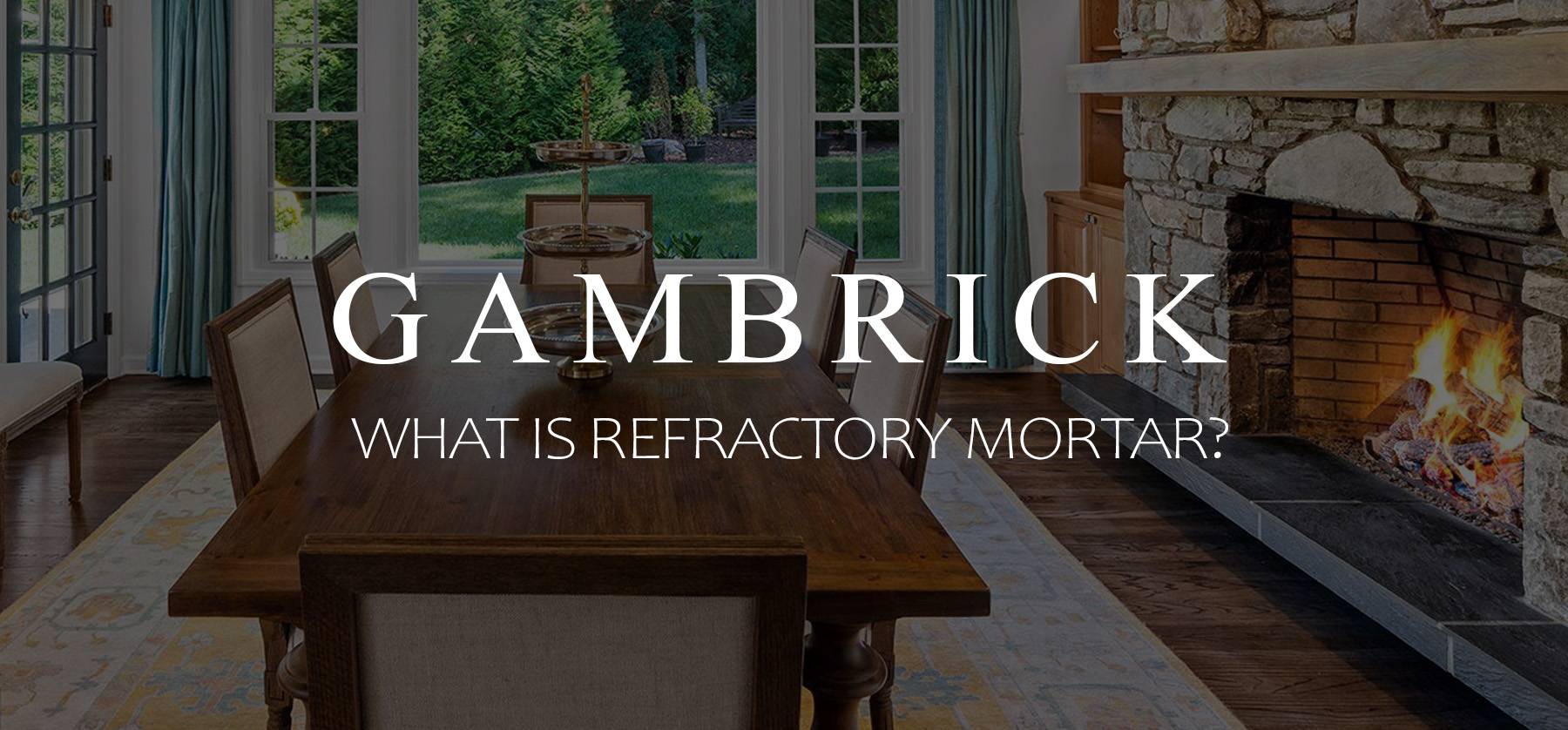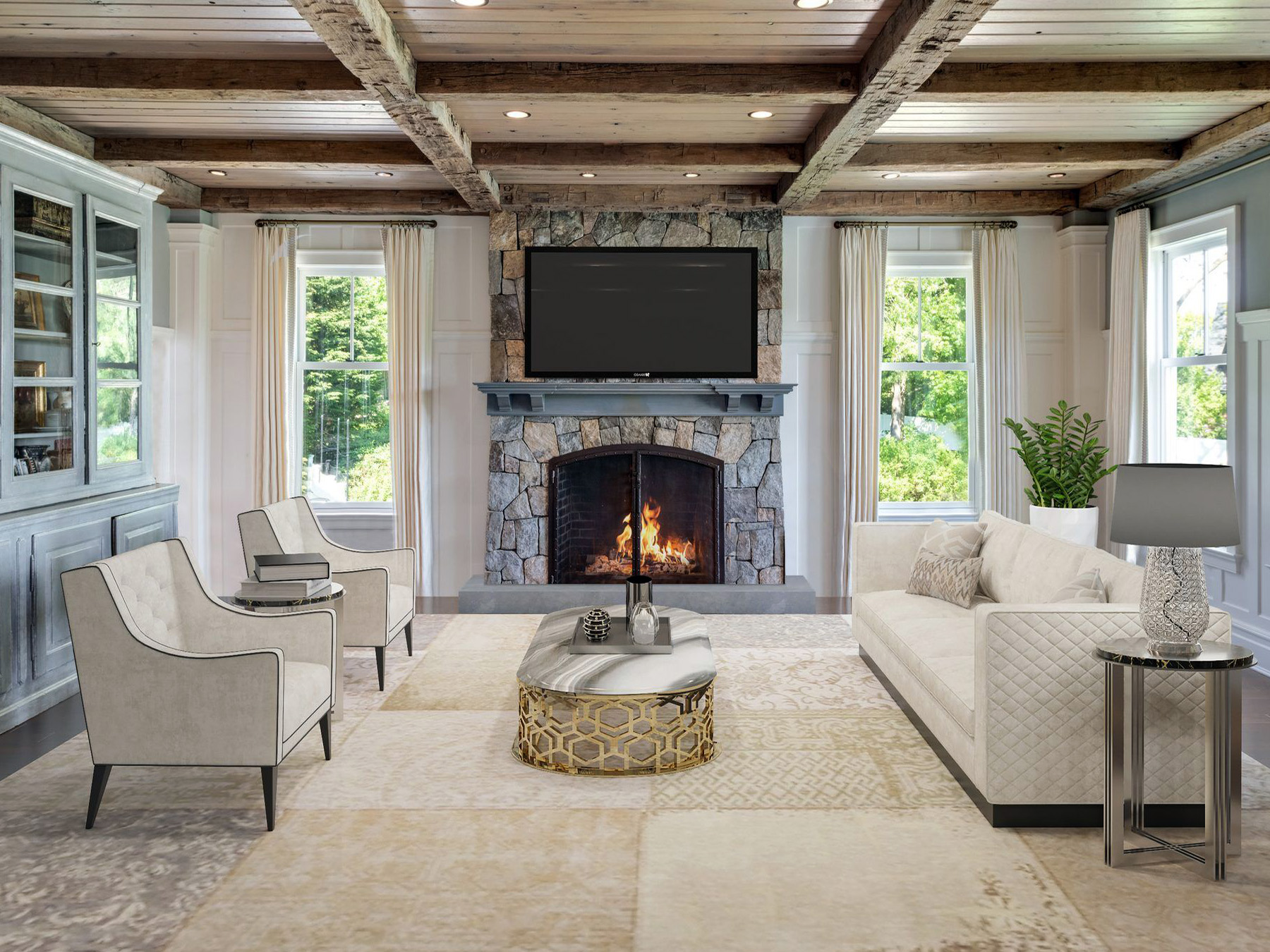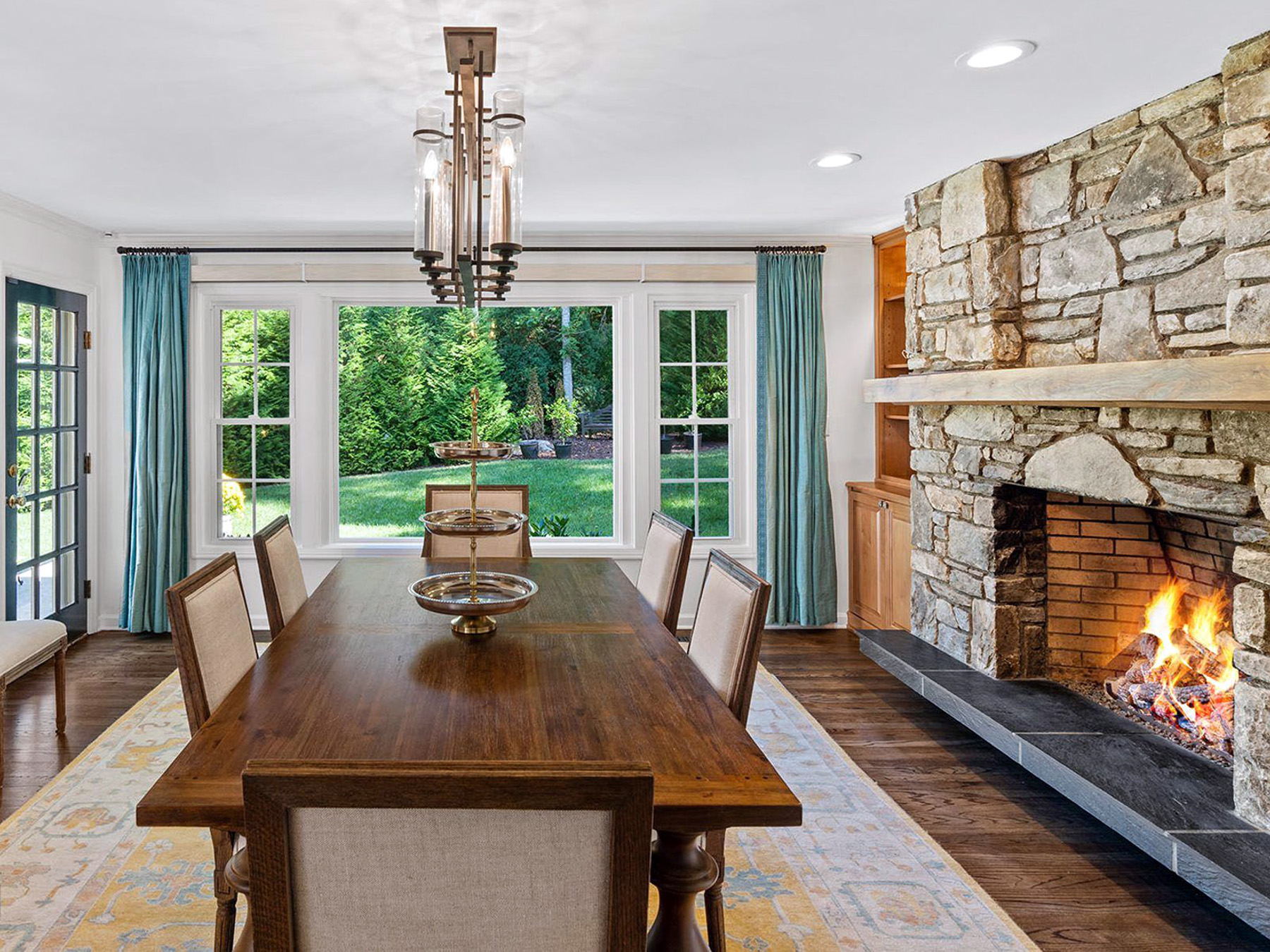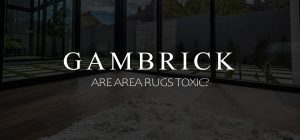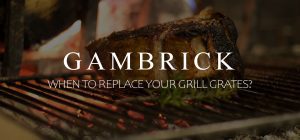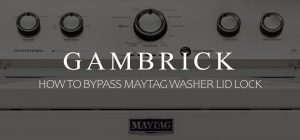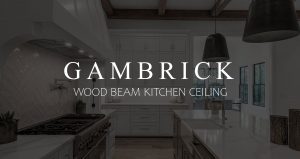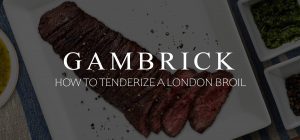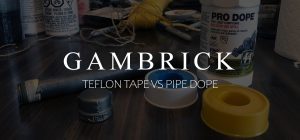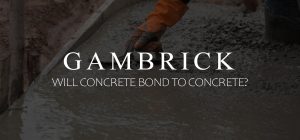What Is Refractory Mortar?
Refractory mortar is a specially designed mix of sand, cement, fireclay and other ingredients such as calcium aluminate that give the mortar extremely high heat-resistance. It’s used to build high-temperature applications such fireplaces, chimneys, fire-pits and pizza ovens. Ordinary mortar can weaken and crack under high temperatures over 600°F. But due to refractory mortars unique design it can handle temperatures of over 2000°F. It’s typically used to bond fire brick, stone or clay flues together.
To be considered a refractory mortar, the material must pass ASTM C-199 (American Society for Testing and Materials) testing standards for mortar temperature limits. Standard mortars can’t handle temperatures much higher than 600°F. This is not hot enough for things like a pizza oven or firebox. But most refractory mortars have been lab tested to resist at least 2,000°F. The exact heat limits of the mortar will be stated on the package.
Most building codes require refractory mortar when installing firebricks and flues in chimneys, masonry fireplaces, and similar applications. Generally speaking, anything built out of masonry should use refractory mortar in the hottest areas. These typically include areas around fire and the chimney.
Refractory mortar should be used when installing firebricks or clay flues indoor & outdoor. Things like masonry fire pits, pizza ovens, fireplaces, chimneys and bread ovens should use it instead of regular mortar. You should also use it when repairing damaged mortar joints between fireplace bricks or chimney flues.
Cement, Concrete & Mortar
Many people who aren’t masons confuse the terms cement, concrete and mortar. The terms are often used interchangeably but they’re very different materials.
Mortar, concrete, and cement are not the same thing. But they can all be used on the same project in different ways.
Cement is a mixture of limestone, clay, shells, silica sand and other ingredients. Its been around for thousands of years and is used to make both concrete and mortar.
- Cement is an ingredient in both mortar and concrete.
- Concrete is made by adding gravel and sand to cement. The sand and cement make concrete extremely strong and durable. But it contains stone so it can’t be applied as thin. Because of the stones you usually don’t use concrete to stack bricks.
- Mortar is made by adding sand to cement but not gravel. Its a strong bonding material that can be laid thinner because it doesn’t contain stones. However because it doesn’t contain stone it’s not as strong as concrete.
When building a fireplace, concrete is used to build the footing and sometimes the foundation. When it’s time to start stacking bricks, mortar is used.
Cement is used to make both the mortar and concrete.
Fireclay
An important ingredient used to make refractory cement and other high heat resistant masonry products is fireclay.
Fireclay is a group of clays that can resist heat up to 3,000°F. It has special heat resistant properties that can be passed on to other products like refractory cement and bricks. Fireclay is used to build fire bricks which is one of the reasons why they can withstand such high temperatures.
Fireclay is also one of the ingredients used to make refractory cement. It’s one of the reasons why it can resist temperatures over 2000°F.
Where Should Refractory Mortar Be Used?
Refractory mortar is designed to resist extreme heat so that’s where it should be used. Any type of masonry construction that’s exposed to high temperatures over 600°F should use it. Where regular mortar and concrete become brittle and crack when exposed to high temperatures, refractory mortar can handle heat over 2,000°F.
Other than it’s heat resistance, refractory mortar is the same as standard mortar. It’s used to bond bricks, stone and other masonry materials together.
Medium-duty refractory cement should be used when building fireplaces, fireboxes, parge coating a smoke chamber, installing clay flue liners, pizza and/or bread ovens and fire pits. Anything you build out of masonry that’s exposed to high temperatures should use it.
The mortar used should also be non-water-soluble, which is where calcium aluminate is helpful. The calcium aluminate binder sets hydraulically which meets the requirement. Without calcium aluminate or an equivalent ingredient, the joints could weaken or wash out when exposed to moisture. This is especially important in outdoor projects like fireplaces, chimneys and fire pits.
Why You Can’t Use Concrete Instead Of Mortar
You can’t use concrete in place of refractory mortar for a few reasons.
First, concrete can’t handle as much heat as refractory mortar. Joints between firebricks and flue pipes are laid fairly thin at between 1/16 to 18 inch. At this thickness, regular concrete can start to crack at temperatures over 600°F. That’s way too cool for areas subjected to direct heat from fire.
In comparison, refractory mortar can resist temperatures over 2000°F.
Second, if you bond firebricks together with mortar and the wall settles, the stones will crack the bricks. Mortar isn’t that strong so settling doesn’t crack the bricks. It’ll give a little which preserve the brick. But stone won’t. When stone and brick press against each other, the brick will crack before the stone.
Settling is hard to completely avoid. Some small amount usually occurs which means re-pointing the mortar. This is a lot easier and cheaper to do than replacing cracked bricks.
Third, mortar has more air content which creates pockets for frozen water to expand into. In exterior applications, water will eventually absorb into the mortar and in cold climates could freeze. A thin layer of concrete that freezes is prone to cracking. But mortar resists cracks because of its internal structure.
Types of Refractory Mortars
There are two types of refractory mortar that conform to ASTM C 199 and are allowed by code. These are Hydraulic setting mortar and Premixed or Air-drying mortar.
In the section below we’ll discuss each type and when you should use them.
Hydraulic-Setting Mortar
Hydraulic-setting mortar is generally considered the best type of refractory mortar. It’s also called non-water-soluble refractory mortar. Its properties not only include heat-resistance but also acid resistance and water insolubility.
- Hydraulic-setting mortar is a great product for setting clay flue liners and fire bricks.
- Its similar to Portland cement based mortar in terms of workability and curing times.
- Its easier to ship and store than premixed.
- Can be used indoors and outdoors.
- Can be colored.
- Preferred if joint thickness exceeds 1/8-inch.
Hydraulic-setting refractory mortar comes dry in bags. Simply add water when ready and mix.
Non-water soluble refractory mortar is the only type that should be used outdoors. Premixed refractory mortar can wash out, even after drying. Because of this, non-water soluble mortar is the better choice for clay flues that can vent gas, oil or when moisture may be present within the clay flue.
Overall, this is our refractory mortar of choice.
Premixed Or Air-Drying Mortar
Premixed refractory mortar is a mix of clay, aggregate, and a liquid silicate as a binder. Its generally considered inferior to hydraulic setting mortar but still has great heat resistance. But some masons prefer using it indoors because it comes premixed and ready to use. This makes it a great product if you don’t have access to water.
- It can dissolve in water after drying
- Requires a long time to dry in wet environments.
- May cause efflorescence.
- Best for use indoors or in dry areas.
- Sets quickly.
- Joints should be 1/16- to 1/8-inch thick.
However, despite having a few flaws when compared to hydraulic-setting refractory mortar, its still a fantastic product when used correctly.
Premixed refractory mortar comes ready to use in pails. It has about the same consistency as a drywall compound and can be thinned with a little water which makes it easy to work with. And it’s easy to clean because it dissolves in water.
Its a great product to use in hot and dry environments because it doesn’t dry out too quickly. This gives you plenty of time to finish the job before the mortar hardens. I use it for building pizza or bread ovens, fireplaces, fireboxes and for repair work.
Since the material is premixed, bricks can be installed quickly.
Premixed mortar sets up quickly. Seconds after setting a brick it takes some effort to dislodge them. And the fast-drying properties of the mortar does not compromise its strength.
Working With Refractory Mortar
Working with refractory mortar is easy. Its not much different than regular mortar in terms of mixing or application. You use the exact same masonry tools and methods.
When mixing dry mortar, add water slowly. Use enough water to mix all the dry material but don’t make it watery. Too much water will weaken the material and make it hard to stack bricks.
Butter a thin layer of refractory mortar on each firebrick that you’re going to lay. If you’re using premixed, I recommend use a small margin trowel because it fits in the bucket better than a pointed trowel. But if you’re using hydraulic I use a pointed trowel.
After applying a small amount on the firebrick, tap it in place. The joint thickness should be about 1/16- 1/8 inch. Use slightly more more mortar than the joint you want to create. Remove excess mortar that oozes out from the bricks with your trowel.
Lay a few bricks at a time and then clean up the face with a sponge and clean water. I usually install a row or two at a time and then clean up a bit. The longer you wait to clean up the face of the bricks, the harder it becomes.
In hot and dry climates, premixed refractory mortar is easier to use. It doesn’t dry out as quickly which makes work easier.
Wetting the firebrick helps if conditions are hot and dry. This is true no matter what type of mortar you use.
Non-water soluble hydraulic refractory mortar is my first choice for just about every application. Especially when working outdoors or in damp areas. However there are some cases where premixed is better.
Working With Premixed Refractory Mortar
Building with premixed refractory mortar is easy.
It’s ready right out of the pale and premixed. Simply open the container and start working. The consistency is similar to gritty drywall compound and goes on smooth. It sets up quickly which makes stacking bricks easy.
Use a joint thickness of around 1/16 to 1/8. If the joints are too thin you won’t have enough material to make a strong bond. Too thick and shrinkage can create gaps.
Premixed mortar makes building curved or slanted firebox areas easy. It sets fast so you don’t have to make forms or wait long for the mortar to set up.
The material can be a little messy to work with, but it’s water soluble. Once you’re done setting bricks, wash off excess material with a rough tile sponge. If some of the mortar hardened on you, scrape it off with a bristle brush.
The Benefits Of Refractory Mortar
Refractory mortar is easy to use, safe and readily available. You can buy it at just about any home improvement store or masonry supply house. And they meet all of the local and national building codes.So you don’t have to worry about failing an inspection because you used the wrong material.
Mason’s used to mix their own heat-resistant mortar on the jobsite. But factory produced refractory products are better, safer and more reliable.
Factory produced mortar has higher heat-resistance, more reliability and acid resistance. If you make you’re own heat resistant material on the jobsite, there’s no way to know exactly how much heat it can withstand without failing. However refractory mortar is tested at a factory. Most are rated to withstand temperatures over 2000°F.
Building Codes Require Refractory Mortar
Most building codes require heat-resistant materials where they’re needed.
These include:
- The International Code Council (ICC).
- The International Residential Code (IRC).
- And the National Fire Protection Association (NFPA-211).
Each of these require medium-duty refractory mortar tested to American Society for Testing Materials, ASTM C-199.
They also require high-temperature resistant firebrick (ASTM C-27 & C-1261) and clay flue lining (ASTM C-315).
When you build something that’s exposed to extremely high temperatures, the materials need to be properly rated. If the fire bricks, clay pipes or mortar fails due to high temperatures, so can the structure. A crack in a firebox, fire-pit, flue or masonry oven could result in a fire.
It’s very important to use high heat-resistant materials whenever you build anything related to fire.
Jobsite Mixed Mortar
Its possible to mix your own heat-resistant mortar on the jobsite, however its not done as much these days. many building codes require a premixed or ready-mix refractory mortar that’s factory produced. This ensures the ingredients and ratios will be correct so that the mortar has the required heat resistance.
Mixing your own heat-resistant mortar on the job can be dangerous. If you make a mistake with the mix ratio or use the wrong ingredient your mortar could lack the heat-resistance it needs. This could lead to cracks and potentially a fire.
Heat-resistant jobsite mortar is produced using sand, fire clay, Portland cement, and lime. This type of mortar has high heat resistance if you mix it properly. However it’s not tested and every batch is slightly different so its hard to know exactly what the heat-resistance is.
I wouldn’t recommend using a jobsite mixed mortar in areas that are exposed to extremely high temperatures like a fireplace, fire-pit or oven. Use a factory mixed refractory mortar instead.
Tips
Here are a few helpful tips that can help you work with refractory mortar.
- Don’t apply it too thick. The maximum thickness should be around 1/16 to 1/18 inch.
- If mortar thickness is too great it can shrink. This can cause bricks to move and may create cracks.
- Mortar thickness greater than 1/8 is OK for areas away from direct heat.
- Its used to bond two materials together like bricks or clay flue pipes.
- Its not used as a thin coating or parge coat.
- Its not used to fill gaps, holes or large spaces between firebricks or clay pipes.
- I generally wait 7-10 days before exposing the mortar to heat. But for an exact time-frame check the packaging.
What’s The Difference Between Refractory Mortar & Refractory Cement?
There’s no real difference between refractory mortar and refractory cement. Both products are designed to resist extremely high heat. And both are used to bond brick, stone, flue tile and other masonry materials together.
When you’re building a masonry product that’ll be exposed to high temperatures you can;t use regular mortar, cement or concrete. You need a product that’s refractory. I recommend something that can withstand at least 2000°F.
I use either product to build fireplaces, fire-pits, pizza or bread ovens, chimneys, etc.
Is There A Special Mortar For Fireplaces?
Yes. Refractory mortar is specially designed for use in high heat masonry projects like a fireplace. Use it instead of regular mortar or cement to bond brick, stone or tiles together. I use refractory mortar to build not only the firebox but also the flue pipe. I also use it as a parge coat in places not touching direct heat.
As you move away from the fire box and flue temperatures start to drop. Eventually they get cool enough to use a standard mortar.
Quikrete Fireplace Mortar is a great product for small jobs. It comes in a standard 10 oz tube and is premixed. I use it to make small joint repairs and repair cracked bricks. But because it’s a premix I only use it indoors.
Sakrete High heat Mortar is a ready mix that comes in a bag. Because it’s ready mix and not premixed you have to add water before you can use it. The product is better than Quikrete Fireplace Mortar for larger jobs. It’s rated to handle over 2500°F. Use it to set firebricks, clay flue tiles or as a parge coat. Because it’s not a premix you can use it outdoors.
Rutland Refractory Mortar is another good product for making repairs. It’s a premixed mortar that comes in a tub. Simply trowel it out of the tub and start laying bricks. It can handle heat up to 2000°F. However it’s a premix so you can only use it indoors.
FAQ
Q: How long does the mortar need to set before building a fire?
I usually wait 7-10 days before building a fire.
Q: Where can you use refractory mortar?
I use refractory mortar to build anything masonry that’s exposed to high heat or fire. This includes pizza and bread ovens, fire-pits, fireplaces and chimneys.
Q: Which is the better refractory mortar, premixed or hydraulic?
In most cases hydraulic is the better choice. Especially when working outdoors. However, there are some cases where premixed is better. For example if it’s really hot and dry I like premixed because it doesn’t dry out as fast.
Q: How thick should the joints be between firebricks?
I make my joints 1/16 to 1/8 inch.
Summary: What Is Refractory Mortar?
Refractory mortar is a specially designed mix of sand, cement, fireclay and other ingredients which give it extremely high heat resistance. This may include calcium aluminate. It’s used to build things like fireplaces, chimneys, fire-pits and pizza ovens. Ordinary mortar can weaken and crack under high temperatures over 600°F. But due to refractory mortars unique design, it can handle temperatures of over 2000°F. It’s used to bond fire brick, stone or clay flues together.
To be considered a refractory mortar, the material must pass ASTM C-199 (American Society for Testing and Materials) testing standards to for its temperature limits. Standard mortars can’t handle temperatures much higher than 600°F. This is not hot enough for things like a pizza oven or firebox. But most refractory mortars have been lab tested to resist at least 2,000°F. The exact heat limits of the mortar will be stated on the package.
Most building codes require refractory mortar when installing firebricks and flues in chimneys, masonry fireplaces, and similar applications. Generally speaking, anything built out of masonry should use refractory mortar in the hottest areas. These typically include areas around fire and the chimney.
Refractory mortar should be used when installing firebricks or clay flues indoor & outdoor. Things like masonry fire pits, pizza ovens, fireplaces, chimneys and bread ovens should use it instead of regular mortar. You should also use it when repairing damaged mortar joints between fireplace bricks or chimney flues.
If you have any questions about mortar, email any time.
